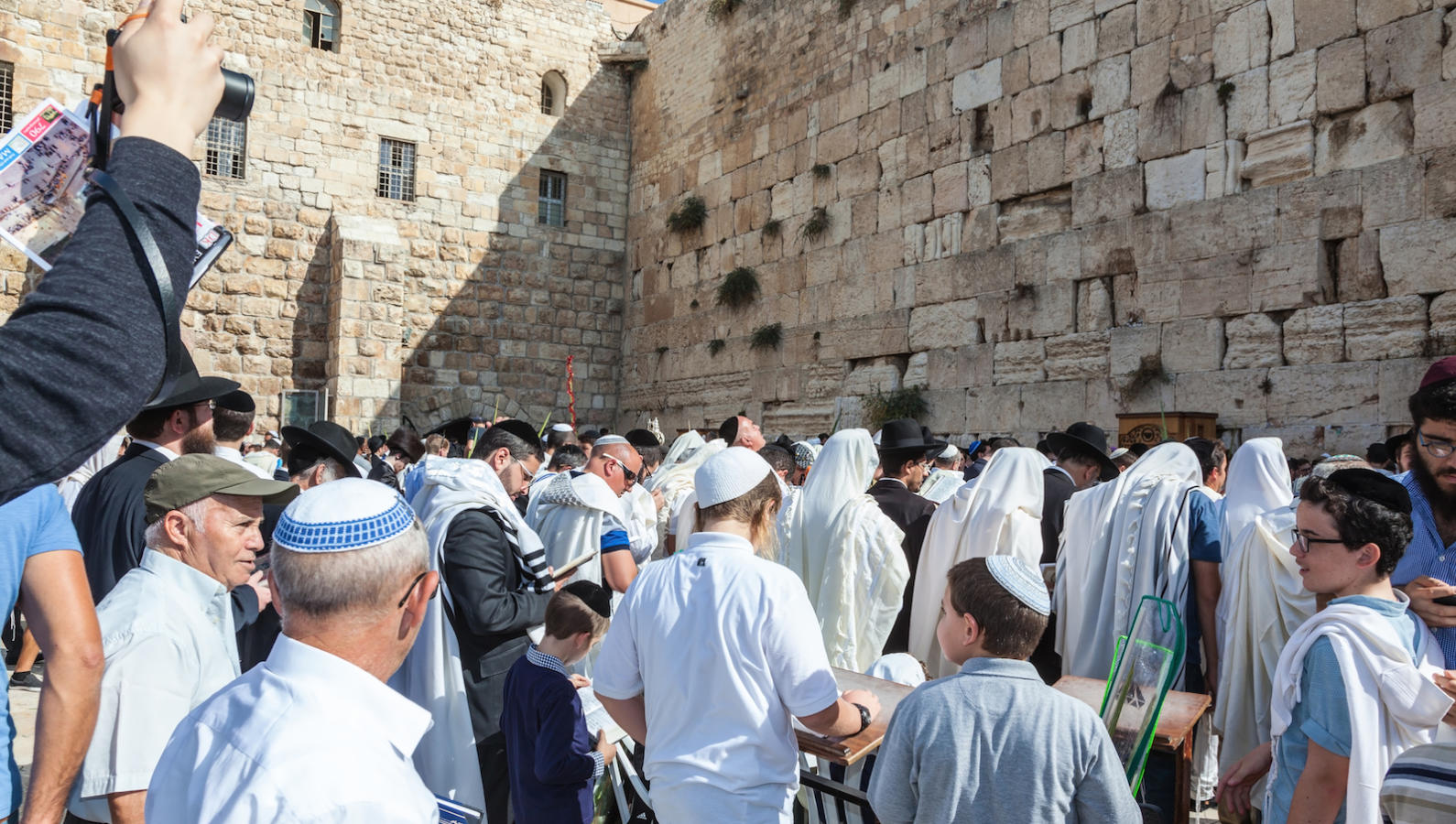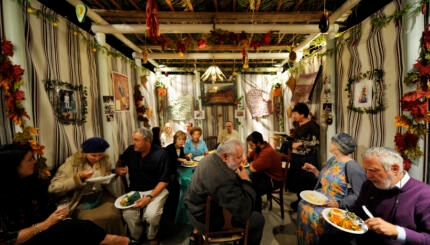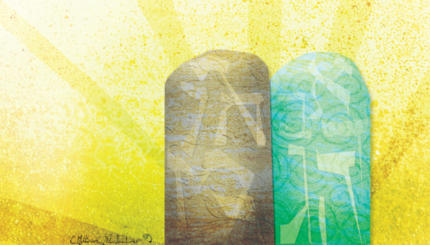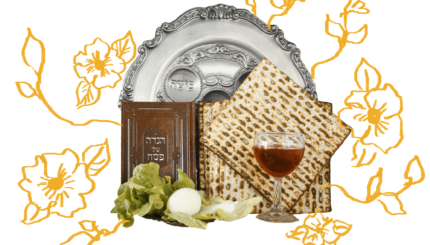A major category of Jewish holidays is the pilgrimage festival. Described in the Hebrew Bible as celebrating both agricultural festivals and historical events in the history of the Jewish people, these three holidays were set aside in biblical times for people to travel to the ancient Temple in Jerusalem. These three holidays are Passover, Shavuot, and Sukkot.
According to the Torah, God commanded the Israelites: “Three times a year shall all your men appear before the Lord your God in the place that God will choose [referring presumably to the Temple in Jerusalem], on the festivals of Pesah (Passover), Shavuot (the Feast of Weeks), and Sukkot (the Festival of Booths). They shall not appear empty handed. Each shall bring his own gift, appropriate to the blessing which the Lord your God has given you” (Deuteronomy 16:16).
Essentially, in this passage, God expresses a desire for all of the male Israelites to travel to Jerusalem (this is why they are called “pilgrimage” festivals) and have the priest offer the animal sacrifice that was incumbent on each of them. It is important to note that the Torah refers only to men in this passage, because in ancient times women were not accorded the same legal or religious status as men. Despite this omission, women did have the same religious and spiritual obligations as men in offering personal sacrifices for thanksgiving and the expiation of sins.
The Three Pilgrimage Festivals
Passover
Celebrates the Exodus of the Jewish people from Egypt, as well as the beginning of the new planting season after the winter rains in Israel, since it falls in the early spring.
With your help, My Jewish Learning can provide endless opportunities for learning, connection and discovery.
Shavuot
Biblically, this is solely an agricultural celebration. Falling exactly seven weeks after Passover, which places it occurs at the time of the late spring harvest. [Shavuot as a celebration of the giving of the Torah is a post-biblical development.]
Sukkot
Celebrates the wandering of the Israelites in the desert for 40 years, when they had to rely only upon God for food and protection. This also celebrates the last harvest festival before the onset of the winter rains in the land of Israel. It falls five days after Yom Kippur, usually in mid-autumn. At the conclusion of Sukkot the holidays of Shemini Atzeret and Simchat Torah are celebrated.
A Community Building Event
The pilgrimage festivals created an opportunity for the Jewish community to reaffirm their communal commitment to the covenant with God, strengthen the self-identification of the nation as a religious community, and entrench the sanctity of Jerusalem and the place where the Temple stood in the religious consciousness of the people. These festivals are at their core a community-building experience. Some scholars even claim that this requirement to travel to Jerusalem and stay there throughout the length of the holiday was strongly endorsed by the nascent biblical-era “business” community of Jerusalem, which benefited from the regular influx of pilgrims seeking food, lodging, and animals for sacrifice.
Historical texts and archeological evidence indicate that in late antiquity, during the Hellenistic and Roman eras, the pilgrimage festivals were a profoundly significant social and religious institution, bringing Jews from all over the ancient world of the Mediterranean to Jerusalem. Thousands upon thousands of Jews made these pilgrimages throughout the year and supported a vast commercial enterprise including the raising of animals for sacrifices, a lively animal market, a complex banking community to enable pilgrims to exchange currencies, and hundreds of inns and taverns to lodge the travelers.
While there are no verifiable numbers of yearly pilgrims, by the end of the first century B.C.E., King Herod the Great, the Roman-appointed ruler of the vassal kingdom of Judea, apparently responded to the pilgrimage needs of the city and built a vast esplanade, or courtyard, surrounding the Temple. This dramatically increased the space of the Temple environs making it possible for thousands more pilgrims to attend religious ceremonies in the sacred precincts of the Temple. In fact, the Harem esh-Sharif (Arabic for “Noble Sanctuary) in Jerusalem, upon which stand the golden Dome of the Rock and Al Aqsa mosque, is built upon the Herodian foundations for the Temple. The Western or “Wailing” Wall is one of the supporting walls of this enormous Herodian Temple courtyard. An ancient rabbinic memory of this era of glory for the Temple claims that even when the hundreds of thousands of pilgrims crowded onto the Temple courtyard for these festivals, no one ever lacked for space or complained about the crowd.
After the Second Temple was destroyed by the Romans in 70 C.E. at the conclusion of the failed Great Revolt of the Jews against the Roman Empire, the pilgrimage festivals continued to be celebrated, but primarily as synagogue-based worship services. For the past 2,000 years, since the cessation of the pilgrimages to the actual Temple in Jerusalem, these holidays have retained the title of “pilgrimage” festivals. Prayers have replaced the animal sacrifices, and the historical and agricultural themes of the festivals have become the dominant aspects of the holidays wherever they are celebrated throughout the Diaspora. In Israel itself, many people continue to make what many consider to be a pilgrimage to the Western Wall [the remnant of the Temple and one of the holiest sites in Judaism], feeling that in so doing, they are following in the footsteps of our ancestors in Temple times.
Sukkot
Pronounced: sue-KOTE, or SOOH-kuss (oo as in book), Origin: Hebrew, a harvest festival in which Jews eat inside temporary huts, falls in the Jewish month of Tishrei, which usually coincides with September or October.
Torah
Pronunced: TORE-uh, Origin: Hebrew, the Five Books of Moses.



